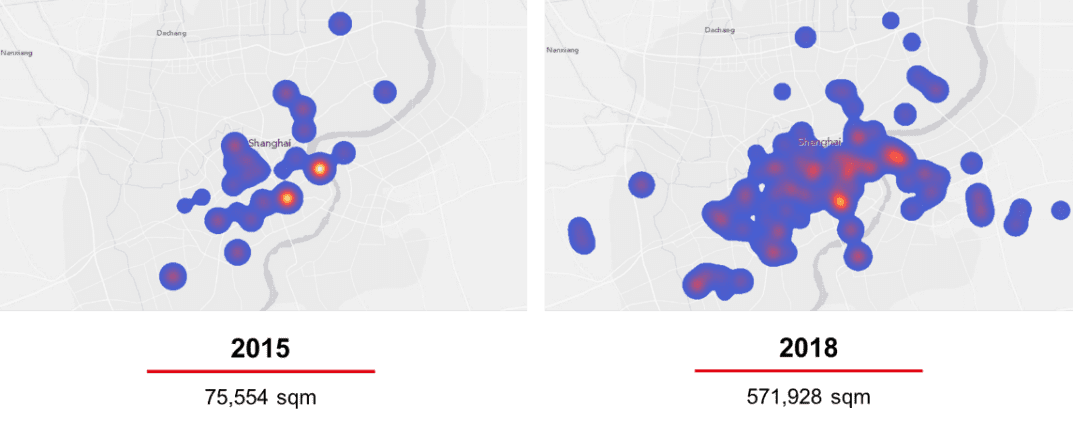What is flexible space?
Flexible space is broadly defined as all space operated by third-party flexible office operators, including traditional serviced offices as well as coworking space. Flexible space can be open-plan, but it can also include small enclosed offices, or even whole floors and buildings. It can be managed by specialised operators, individual landlords, or partnerships between the two.
Serviced offices
Serviced offices - sometimes referred to as business centers or executive suites - are often found in CBDs of major cities around the world. This type of space is generally more formal in terms of design and decoration, and allows more flexible rental terms than conventional leased office spaces.
Serviced office providers often allow tenants to share reception services, printers and other office technology, and other resources, reducing costs and providing access to equipment which may otherwise be unaffordable.
Serviced offices are suitable for immediate occupation with space fully furnished. In contrast to traditional leased space, a serviced office can accommodate a range of workplace sizes and has a more flexible arrangement for companies looking to set up quickly and negotiate short-term commitments.
Coworking space
Co-working emphasizes creating an office space that supports collaboration, openness, knowledge sharing, innovation, and user experience. Lease terms are flexible, offering companies the option to rapidly scale their workspace up or down. Co-working spaces are sought after by many enterprises looking to reduce their real estate costs and meet the diverse needs of their employees. Similar to serviced offices, coworking spaces provide businesses with access to shared resources such as Wi-Fi, office equipment, and a variety of workspaces, all with flexible contracting arrangements.
Coworking space has a long history in Europe and the United States, and lately it is experiencing explosive growth in China as well. Five key factors have stimulated coworking growth in China:
- Rise of the millennial workforce
- Government support
- Venture capital
- Technology boom
- Sharing economy
While startups and individual occupiers created the initial wave of hype for China’s coworking sector, corporate occupiers have since grown at exponential rates, with a concomitant increase in the sector’s variety of demand drivers and user profiles.
In China’s largest coworking market of Shanghai, the total GFA of major operators surged from 75,000 sqm at the end of 2015 to almost 572,000 sqm in the first quarter of 1Q18. The heat map below shows how this expansion has played out both in terms of quantity and geographical coverage. Coworking spaces span a wide range of asset types, including both Grade A to Grade B offices as well as retail mall spaces and industrial space conversions..

Note: Based on 13 notable coworking operators’ locations; Data as of 1Q18.
Please click on the city you are interested in:








